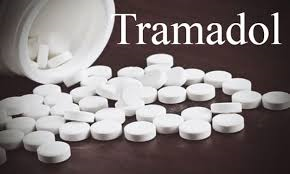Hyperacusis is new drug safety signal identified for Tramadol drug by UMC (Uppsala Monitoring Center), a WHO Collaborating Centre.
Hyperacusis is a rare hearing disorder which is characterized by an increased sensitivity to certain frequencies and volume ranges of sound. This disorder makes it hard to deal with everyday sounds and causes an intolerance to usual environmental sound. Hyperacusis affects 1 in 50,000 people. Usually, hyperacusis is associated with another concurrent condition-tinnitus (a buzzing or ringing in ear), depression and migraine.
Tramadol is an opioid drug used in the treatment of moderate to severe pain. It acts as agonist on μ‑, δ- and κ-opioid receptors, with a higher affinity for the μ receptor. This molecule inhibits the neuronal re-uptake of norepinephrine and by enhancing 5-hydroxy tryptamine (serotonin) release, thereby achieving the analgesic effect. The analgesic effect occurs within 30-60 minutes after drug administration.

Tramadol
Case Reports in VigiBase:
In April 2018, WHO-UMC center has initially identified the association of hyperacusis with tramadol drug. There are total 20 case reports in the VigiBase (a global drug safety database maintained by WHO-UMC) pertaining to this Drug-ADR combination: Tramadol-Hyperacusis (Data as of June 2019)
Stratification of cases:
Gender: Female (15 cases), Male (5 cases)
Age Range (reported in 18 cases): 17 to 62 years (median age: 38 years)
Country of origin: Denmark (4), United Kingdom (4), Netherlands (4), Australia (2), United States (2) and Canada, France (1), Norway (1), and Thailand (1).
Reporter type: Health care professional (8), Consumer (11), Unknown (1)
Analysis:
Out of 20 cases, 18 cases have only tramadol as suspected drug and in 2 cases, patients experienced hyperacusis along with other safety concerns (flu symptoms, tiredness, light sensitivity, poor sleep and formication in one patient; Extreme sound and light sensitivity, sexual dysfunction, extreme irritation/anger, suicidal thoughts, fatigue, and auditory hallucinations in the second patient) after withdrawal of tramadol and the reporter considered these as drug withdrawal symptoms.
Temporal relationship (reported a reasonable time for 14 cases): Two days for symptoms onset in one case and Less than or equal to one day in remaining 13 cases
De-challenge: (6 cases with positive dechallenge) Drug withdrawn in 7 cases and Dose reduced in one case. Of the 8 cases, event recovery was reported in 6 cases. Action taken with respect to drug in another cases is unknown (6) and dose not changed (4), out of which 4 patients were recovered from hyperacusis.
Re-challenge: (2 cases with positive rechallenge) 2 patients had recurrence of hyperacusis upon tramadol re-administration.
Underlying mechanism for Hyperacusis:
Hearing related problems associated with chronic opioid use is being reported frequently. The mechanism involved here is agnostic action of opioid drugs on κ-opioid receptors which mediates facilitation of NMDA receptor sensitivity to glutamate (cochlear NMDA receptors). This causes potentiation of glutamate excitotoxicity at cochlear Type-I auditory dendrites. This condition also occurs and can be worsened by fatigue and stress.
Hyperacusis is not a listed safety concern for Tramadol (tinnitus is well documented). However it is listed for another opioid drug oxycodone as per summary of product characteristics (SmPC). Oxycodone associated hyperacusis occurs in greater extent when compared with tramadol. It is because oxycodone has high affinity for κ2b-opioid receptor (hyperacusis caused by κ-opioid receptor activation) and low affinity for μ receptor in contrast to tramadol’s higher affinity for μ receptor.
UMC stated that this “Drug-ADR combination: Tramadol-Hyperacusis” association is not disproportionally over-reported, with the number of observed reports being 20 and the expected number 21. The total number of case reports in VigiBase (20) is low by considering the extensive global use of tramadol drug. However, the available safety evidence (reasonable temporal relationship, 6 cases of positive dechallenge and 2 cases of positive rechallenge and reporting of tramadol as the only suspect drug in most of cases) from the existing case reports in VigiBase and the. κ-opioid receptor-mediated facilitation of NMDA receptor sensitivity to glutamate supports as the mechanism for this condition suggests a reasonable causal relationship between hyperacusis and tramadol use.
This safety finding. hyperacusis has a possible impact on the quality of life. A more precise labelling by inclusion of hyperacusis into the package information leaflet/product information documents could benefit patients.